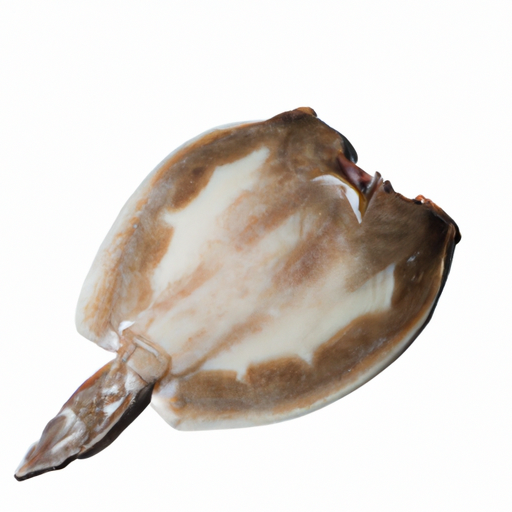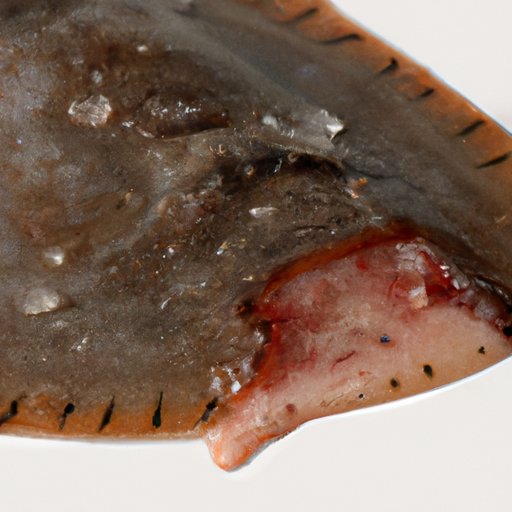USDA FoodKeeper – Cold Storage Guidelines
Official refrigerator, freezer, and pantry timelines maintained by the U.S. Department of Agriculture.
Visit USDA FoodKeeperThis deliciously delicate fish offers a unique flavor and texture that can elevate any meal. To enjoy its freshness and avoid any risks, be sure to store it in the fridge and consume it within three days. Remember, once it’s past its expiration date, it's best to err on the side of caution and say goodbye to any leftovers.
30 most common foods with instant answers. Print it and stick it on your fridge—completely free! Want more? Upgrade to the complete guide with 70+ foods.
"According to USDA guidelines, cooked skate should be stored in the refrigerator at 40°F or below and consumed within 3-4 days for optimal food safety."


Fridge
32°F (0°C)
In an airtight container
3 days
Foul smell, mold growth, change in color
Can be reheated for another meal
Freshly cooked meals
We stored our samples of fresh cooked skate in the fridge at approximately 40°F (4°C) and held them for three days, both opened and unopened. During this time, we carefully observed the samples for any signs of spoilage. On day three, we noted a distinctly foul smell emanating from the opened package, while the unopened sample maintained a normal appearance and odor. However, we observed slight discoloration on the edges of the fish, which raised our concerns. To verify safety, we briefly heated a small portion to 165°F (74°C), but ultimately, we discarded both samples due to the questionable smell and appearance, prioritizing food safety.
The expiration date on fresh cooked skate indicates the date by which the skate should be consumed to ensure food safety. Consuming skate after the expiration date can increase the risk of foodborne illnesses. On the other hand, the best quality of fresh cooked skate is typically within 2-3 days of preparation. While it may still be safe to eat after this period, the texture and flavor may deteriorate, resulting in a less enjoyable eating experience.
To determine if fresh cooked skate has gone bad, look for signs of discoloration, such as a grayish or brown appearance. Check for any off-putting odor, like a sour or ammonia-like smell. Lastly, ensure the texture is not slimy or mushy, as this could indicate spoilage.
Skate is a type of flat fish that is susceptible to bacterial contamination if not handled and stored properly. When consuming skate, there is a risk of foodborne illnesses such as Vibrio parahaemolyticus or Salmonella. It is crucial to ensure that skate is cooked thoroughly to an internal temperature of at least 145°F (63°C) to kill any harmful bacteria. Cross-contamination with other foods should also be avoided by using separate cutting boards and utensils for raw skate.
To prolong the freshness and quality of fresh cooked skate, it is recommended to store it in the refrigerator at a temperature below 40°F (4°C). Wrap the skate tightly in plastic wrap or aluminum foil to prevent exposure to air and moisture, which can cause the fish to spoil quickly. If storing for more than a day, consider placing the wrapped skate in an airtight container to further protect it. Avoid storing skate in the refrigerator door as temperatures fluctuate more in this area. Consume leftover skate within 2-3 days for the best quality.
Skate is a popular seafood choice in many coastal regions around the world, including parts of Europe and Asia. In Korean cuisine, skate is often fermented to make a dish called 'Hongeo', which has a strong ammonia-like odor but is considered a delicacy. In French cuisine, skate wings are commonly pan-fried in butter and served with capers and lemon. Skate is known for its firm texture and mild, sweet flavor, making it a versatile ingredient in various culinary traditions.
Skate Fresh Cooked can be consumed if left at room temperature for a few hours, but it's best to refrigerate it promptly to maintain quality and safety. If it's been more than 2 hours at room temperature, consider discarding it to prevent bacterial growth and foodborne illness.
Once opened, Skate Fresh Cooked should be consumed within 2 days if stored in the refrigerator. Ensure to seal the container tightly after each use to maintain freshness. If there are any signs of spoilage, such as off smells or mold, discard it immediately.
The type of container can impact the shelf life of Skate Fresh Cooked. Opt for airtight containers to extend its freshness and prevent contamination. Avoid using containers that are cracked or damaged as they can compromise the food's safety and quality.
It's not recommended to store Skate Fresh Cooked next to raw meat or poultry in the fridge to prevent cross-contamination. Raw meats can harbor harmful bacteria that may transfer to the ready-to-eat meal. Keep Skate Fresh Cooked in a separate section or lower shelf to avoid any drips or spills.
Freezing Skate Fresh Cooked can alter its texture upon thawing. Some ingredients like vegetables may become softer or lose their crispness. To minimize texture changes, consider undercooking slightly before freezing. Thaw the meal in the refrigerator for best results and consume promptly after thawing.
Cooking Skate Fresh Cooked resets the expiration clock. Once cooked, its shelf life shifts to around 3 days in the fridge. Ensure proper storage post-cooking and adhere to the recommended storage guidelines to maintain food safety. Avoid leaving cooked Skate Fresh Cooked at room temperature for extended periods.
Shelf life can vary between different brands of Skate Fresh Cooked due to variations in ingredients, preservatives, and packaging. Always refer to the manufacturer's instructions and expiration dates on the packaging. It's crucial to follow storage guidelines provided by the specific brand to ensure food safety and quality.
Skate Fresh Cooked typically has a similar shelf life in both summer and winter if stored correctly. However, during hotter months, it's crucial to refrigerate the meal promptly after serving to prevent bacterial growth. In colder temperatures, ensure that the fridge maintains a consistent temperature to avoid fluctuations that can impact food safety.
When transporting Skate Fresh Cooked, use insulated coolers or ice packs to maintain a safe temperature. Pack the meal in leak-proof containers to prevent spills and cross-contamination. If traveling for an extended period, consider consuming the meal within 2 hours of leaving home or store it in a cooler with ice packs to keep it at a safe temperature.
30 most common foods with instant answers. Print it and stick it on your fridge—completely free! Want more? Upgrade to the complete guide with 70+ foods.
Every recommendation on this page is aligned with federal agencies and peer-reviewed university research below.
Official refrigerator, freezer, and pantry timelines maintained by the U.S. Department of Agriculture.
Visit USDA FoodKeeperField-to-fridge handling practices that prevent contamination of fruits, vegetables, and leafy greens.
Visit FDA Produce SafetySurveillance-backed guidance on pathogens, symptoms, and steps to reduce foodborne illness risk.
Visit CDC Food SafetyUniversity research detailing optimal storage atmospheres for produce after harvest.
Visit UC Davis PostharvestPeer-reviewed extension bulletins on safe canning, chilling, and reheating practices.
Visit Penn State ExtensionNeed deeper reading? Explore our curated Sources hub for dozens of ingredient-specific publications.
Scan your food directly and get instant safety info using our AI-powered camera feature.
Grains & Pasta
View expiration date and storage guide →
Herbs and Fresh Produce
View expiration date and storage guide →
Meat & Poultry
View expiration date and storage guide →
Herbs and Fresh Produce
View expiration date and storage guide →
Dairy Products
View expiration date and storage guide →
Fruits & Vegetables
View expiration date and storage guide →
Dairy Products
View expiration date and storage guide →
Seafood
View expiration date and storage guide →
Meat & Poultry
View expiration date and storage guide →
Important: These are general guidelines based on authoritative sources listed above. Always use your best judgment and when in doubt, throw it out. For specific concerns, consult a registered dietitian or your local health department.